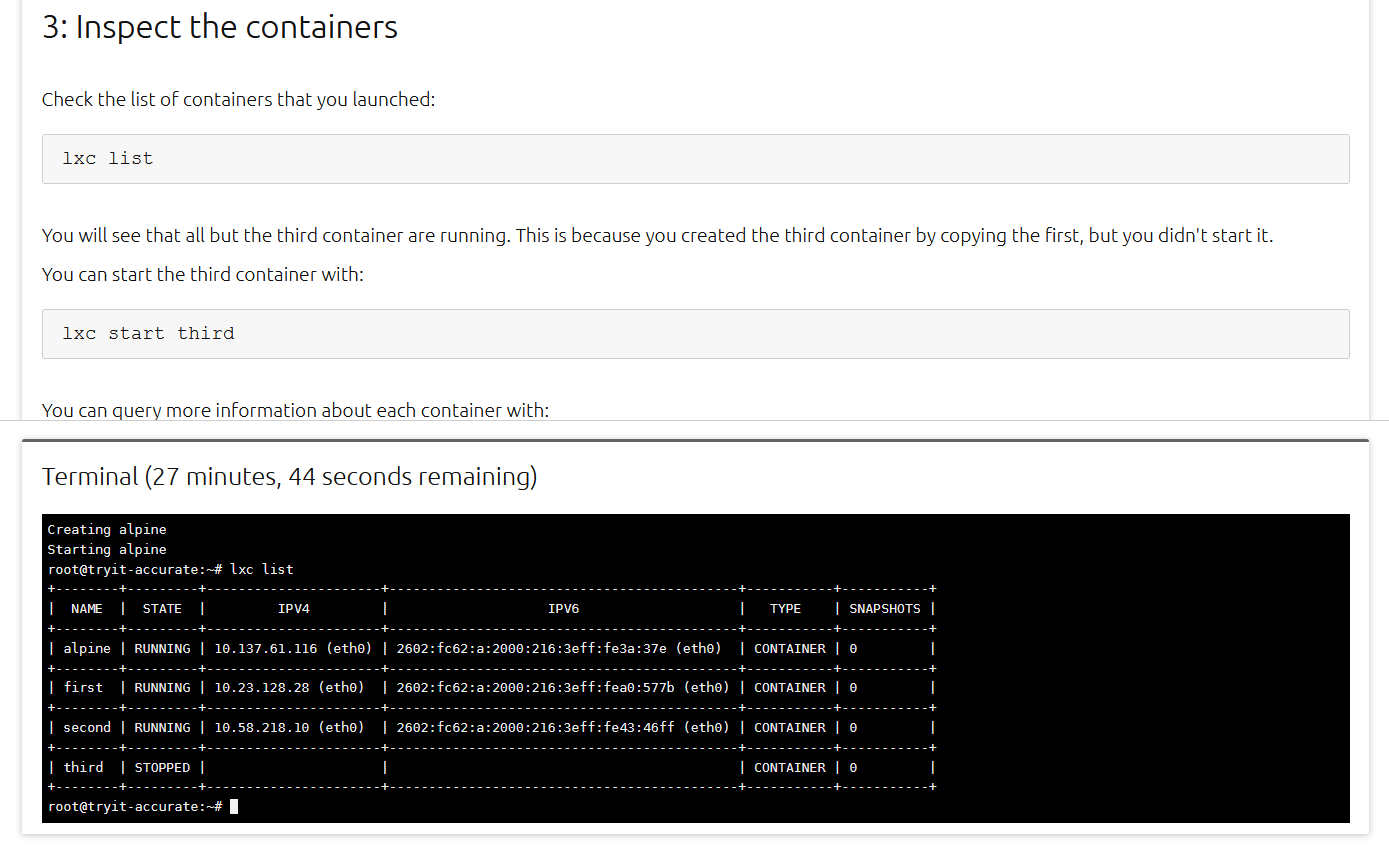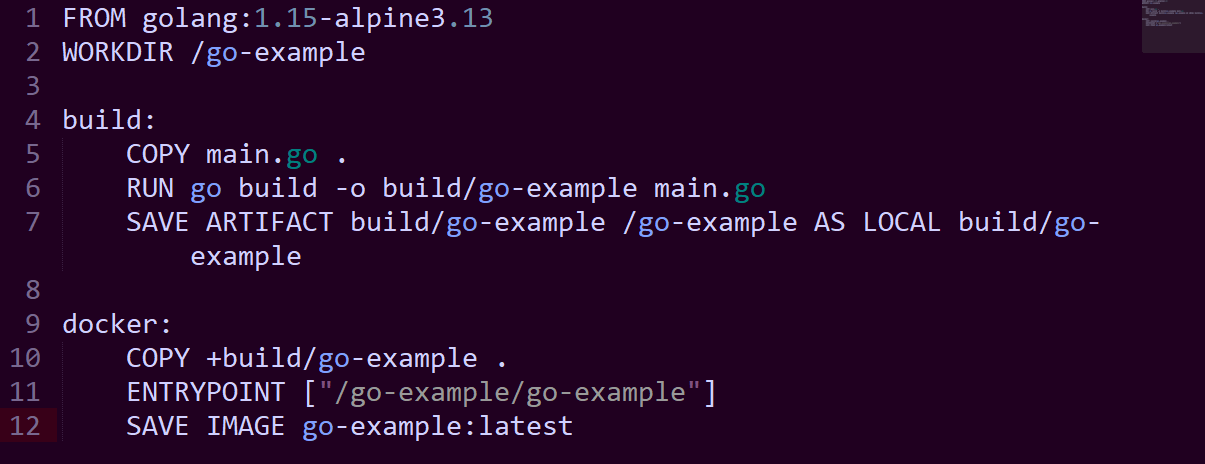Exploring Docker Alternatives
We’re Earthly. Into exploring Docker alternatives? We’re an open-source build tool that simplifies the software building process and works great with Docker, Podman and other container platforms. Check us out.
Docker sits proudly atop its niche, with an estimated 83 percent of the container software market. Development teams use it to make deploying software faster and securer. Its easy-to-use containerization means you can get deployments up and running without stressing over configuration or dependencies.

Docker isn’t perfect, though. Its overheads are non-trivial, and it has some security issues, such as needing root to run and needing to embed secrets in build files.
But Docker isn’t your only option. As cloud tools evolve and more companies switch to containerization, more players are entering the market. Some of these are wholly different products, while others are offshoots from Docker. Understanding the pros and cons of these alternative tools can help you choose one that works for your team.
This article will examine some of the more popular alternatives to Docker, both container and non-container tools, and compare them in terms of their scalability, documentation quality, cost, and other factors.
Podman
Podman is a container management product that is ideal if you’re working with or developing your own containers. It aims to be a direct replacement for Docker, and it uses the same commands, meaning you can swap it into existing projects.
It’s a great way to level up if you already work with Docker, allowing you to easily find and manage Docker containers. It also runs with other products, like Kubernetes.
Podman can create customized versions of containers and share them with other users. If you regularly use containerized products, it lets you explore other products. If you’re developing workflows, it can help you test the waters.
Podman’s documentation is excellent for a small-scale project and includes a well-written introduction, an API reference, and several tutorials.
It’s free, open-source, and runs on Linux.
LXD/LXC

LXD is a container and virtual machine management tool. It builds off LXC and, confusingly, also has its own CLI tool, lxc. Both LXC and LXD can replace Docker for some use cases.
LXC gives you a virtual machine–like environment but doesn’t include a full kernel. It allows you to run multiple processes per container, in contrast to one in Docker.
LXD allows you to fully virtualize a Linux instance inside either a container or a virtual machine. That allows you to run multiple distributions with different architectures alongside each other.
It has a clear tutorial and web demo, and its documentation is well written.
It’s free and open-source, and you can test it online. It runs on Linux.
Containerd
Containerd is included as part of Docker but has now been released separately. It provides a layer of abstraction between containers and your system, allowing you to transfer images and manage storage and network connections.
That’s useful if you only need some of what Docker offers. If you’re using another container solution or creating your own containers, Containerd can give you access to low-level functions that make it much easier to use.
Its documentation is listed as “under construction,” but there is a detailed getting-started guide and several community links. The project authors do answer questions if you get stuck.
Containerd is open-source and runs as a daemon on Linux and Windows.
Buildah
Buildah is maintained by the containers organization responsible for Podman and other projects.
You can use it to build containers, and it works well in tandem with Podman. Using Buildah to build containers and Podman to manage them lets you replace Docker’s functionality without the security risk of having your containers run as root.
Its documentation consists mostly of a handful of tutorials, but there’s a mailing list, and the devs respond to questions on GitHub, so community support is there if you need it.
There has been discussion over its scalability when building multiple containers on a single machine, so Docker might work better when disk space is an issue.
Buildah is free and open-source. It runs on Linux only.
BuildKit
BuildKit is an enhanced build engine for Docker that improves performance, storage, and security.
It has been integrated with Docker since version 18.06, so if you’re using an updated version, you may already be using it. If not, you can activate it by changing the settings to use it by default or by adding a parameter in the command line.
It allows you to pass secrets into your build safely without having to embed them in your final image.
Its documentation is a long, detailed GitHub README, along with community support. It’s also mentioned in Docker’s documentation.
BuildKit’s client is available for Linux, Windows, and Mac, though its daemon is Linux only. That means you can run command line builds with Linux, but you can’t run it as a service, and you can’t easily connect with other tools, such as Podman or Kubernetes.
Kaniko
Kaniko lets you build images from Docker files inside containers or from Kubernetes clusters. That’s useful if you can’t easily or securely run Docker in those locations.
It is faster than Docker and doesn’t require a privileged mode to run.
Its documentation, again, is a long GitHub README, with plenty of support from its community.
Kaniko is for Linux only and doesn’t support building Windows containers. It’s free and open-source.
RunC
RunC is another tool that was originally part of Docker but has been released separately and is available on GitHub.
It allows you to spawn containers from the command line or to run your own containerization solution, free of the baggage that comes with Docker.
It’s secure and scalable and is a great choice for those looking to take full control of their containerization pipeline.
As a specialized tool, it is pitched at developers. It isn’t a user-friendly consumer product, and its documentation reflects that.
RunC is free and open-source, for Linux only.
Kubernetes
Kubernetes doesn’t necessarily replace Docker. In fact, it most commonly runs with Docker, though it can use other container technologies. It allows you to manage containers across multiple nodes. If you need to manage multiple images across different systems, Kubernetes is the tool for you.
It’s perfect for scaling up your operations. If you’re deploying services in the cloud, it can very likely improve your workflows.
Aside from Docker, it’s probably the most well-known tool on the list and has a wealth of quality documentation and community support. It is, however, not a simple tool, so expect to put time and effort in if you want to use it effectively.
Kubernetes runs on all major OSs and is free and open-source.
VMware
VMware has a whole range of software services available. ESXi is core to these, allowing multiple virtual operating systems to function on a single machine and behave independently.
Docker is generally considered the disruptor of VMware’s territory, but the older products still have their uses.
VMware uses a virtual machine to isolate your deployments from the host system. It doesn’t use containerization, like Docker, but it can solve similar problems and is worth considering as an alternative.
However, it’s also possible to use them in tandem. Virtual machines are more independent than containers but take longer to deploy. Running Docker apps on virtual machines gives you the best of both worlds.
VMware’s products are targeted at enterprise users. There’s extensive documentation that experienced administrators will appreciate, but newcomers to containerization may find a high barrier to entry.
Cloud prices range from $576.96 for its VMware vSphere Essentials Kit to $5,596 for its Essentials Plus Kit. Its desktop products start at $149.
Much of VMware’s software is for Windows and Linux, though it does have a container sandbox for Mac.
OpenVZ
OpenVZ is another product that allows you to run multiple containers as virtual operating systems on a single machine.
It’s fast and efficient since it doesn’t have its own hypervisor. Containers need to run the same architecture and kernel version, though, so it isn’t as flexible as some solutions.
OpenVZ scales as well as the Linux kernel and offers potential data center maintenance cost savings of up to 75 percent, according to some.
It’s well documented, including a knowledge base, FAQ, and screencasts. There’s also a forum, though not all issues on it are answered.
It’s free, open-source, and Linux only.
VirtualBox
VirtualBox is another virtualization product, letting you run full alternative operating systems on your host machine. It’s a high performance product and relatively easy to use.
It runs on Windows, Mac, Linux, Solaris, and OpenSolaris. It has also been ported to Genode and FreeBSD. If you need to deploy to multiple operating systems, it’s a strong choice.
Its documentation is extensive but does have a slightly older vibe to it.
VirtualBox is free and open-source.
Conclusion
Docker is the go-to choice for containerization, but there are some strong alternatives. Many offer benefits, like better security and a lighter footprint. If Docker doesn’t quite do what you want, there’s a good chance you can find a tool that does.
The key is to be aware of your project needs. If you’re just starting out with containerization, a flexible tool that lets you explore your options can help you make the right choice.

If you want to make your build process easier, try Earthly. It lets you run repeatable, cached builds and works with all the tools listed above. It’s also free and open-source, making it ideal for teams of all sizes and budgets.
Earthly makes CI/CD super simple
Fast, repeatable CI/CD with an instantly familiar syntax – like Dockerfile and Makefile had a baby.









